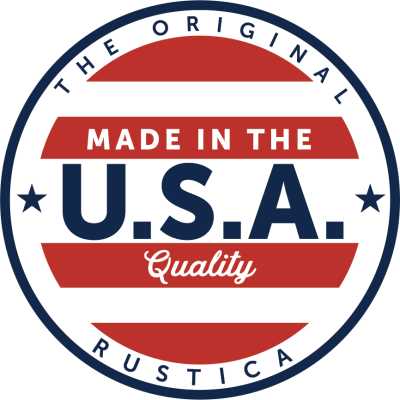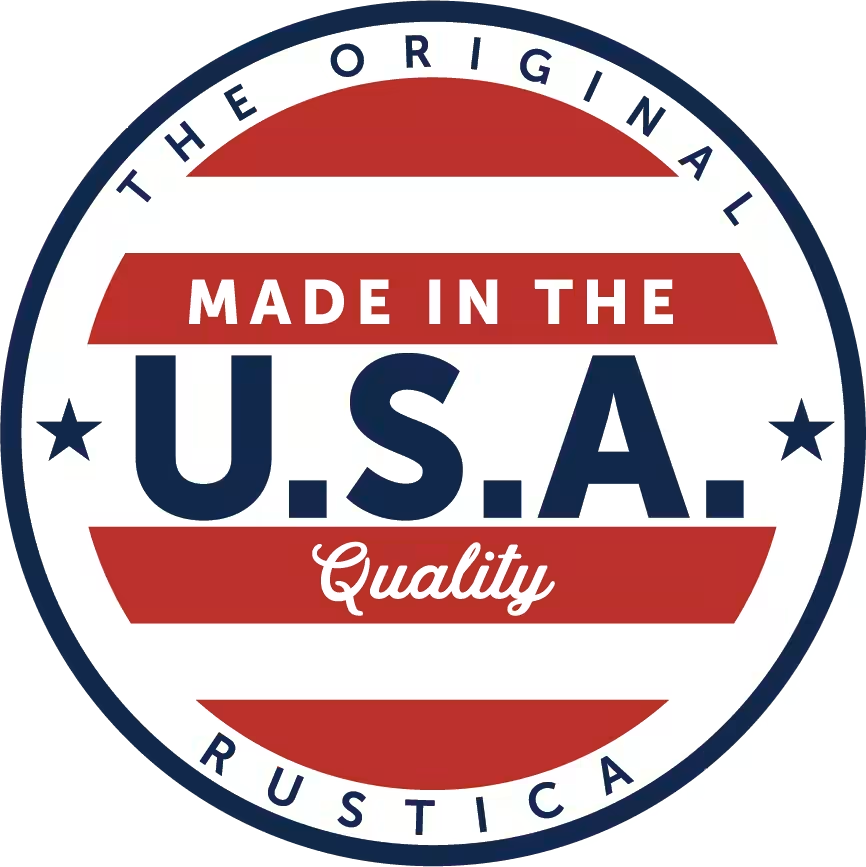When deciding which type of glass you want for your windows—be it for a commercial or residential
project—it’s important to understand the
glass types available.
One popular option is tempered glass, which is perhaps the most common and widely used safety glass on the market
today. If you’re considering tempered glass for your windows, it’s important to understand what it is, how it’s
made, where it’s applicable (and where it isn’t).
Tempered Glass Windows FAQs
- What is Tempered Glass?
- How is Tempered Glass Made?
- How to Tell if Glass is Tempered?
- How Strong is Tempered Glass?
- When to Use Tempered Glass Windows
- Are Tempered Glass Windows Energy Efficient?
- How to Clean Tempered Glass Windows
- How to Fix Tempered Glass Windows
When you know the ins and outs of tempered glass, you’ll be better equipped to evaluate if tempered glass
windows are right for your situation. In some cases, tempered glass is required, so it’s important to know what
areas of the home or business necessitate safety windows. This way, you can avoid potentially dangerous situations
and remain compliant with local residential and commercial building codes.
Frequently Asked Questions About Tempered Glass Windows
By addressing each of the frequently asked questions
about tempered glass windows, we’ll provide you with everything you need to know about tempered glass. This way,
you’ll feel confident and knowledgeable about your options throughout your entire window buying process.
1. What is Tempered Glass
Tempered glass is a type of “
safety glass,” which
means the glass is safer than regular
annealed glass.
Tempered glass is much stronger, more heat resistant, and breaks differently than annealed glass. Tempered glass is
also referred to as toughened glass—these names are often used interchangeably.
Rather than shattering into jagged shards (as annealed glass does), tempered glass breaks into many small pieces
with rounded edges. This type of broken glass is much safer than large shards of sharp glass, preventing injury when
the glass is shattered. Because of its strength, resistance to heat, and the way it breaks, it is used in a variety
of items, including an electronic screen protector, glass tabletops, glass shelves, glass doors, a
shower door, and the
side and rearview window glass on cars.
Furthermore, tempered glass or
laminated glass
(another type of safety glass) is required in areas where human safety is a concern. For example, if there was an
explosion or severe storm that can shatter a window, those nearby are less likely to be injured by tempered glass
than by annealed glass. Plus, cleaning up the debris is safer with tempered glass than annealed glass.
Because tempered glass is four times stronger than regular annealed glass, it has
more impact resistance. This means it’s harder to break, and is less likely to shatter from normal wear and tear.
For this reason, glass doors, windows near walkways and doors, and glass table tops are required to be made from
tempered glass. As you can imagine, if a glass door were to be slammed shut, you would want a toughened glass that
can handle the impact.
That said, tempered glass can still break, so it is by no
means a bulletproof glass. Moreover, it is more likely to completely shatter when broken, which is why it isn’t
considered a security glass. If you’re interested in glass that is shatter resistant, consider laminated glass,
which is the strongest safety glass on the market.
You can still use tempered glass
for home windows in areas where tempered glass isn’t required. Perhaps you would like the extra safety or want to
make sure your windows are more break resistant. Tempered glass
replacement
windows are a great option in new or older homes, especially in areas that experience frequent and severe
storms.
2. How is Tempered Glass Made?
Tempered glass is made from regular annealed glass that goes through an
intense heating and cooling process. It can also be made with a chemical treatment.
With the heat method, the annealed glass is first cut to size and inspected for any imperfections that could affect
the tempering process. The glass is then readied to be tempered by removing sharp edges with sandpaper. All of this
is done
before the tempering process. Once the glass is tempered, it can’t be cut or edged down
because it will cause the glass to lose its strength or even shatter. This is a critical aspect of tempered windows
to keep in mind, especially when ordering custom replacement windows, as the window glass will need to be the
correct size and can’t be cut or resized after ordering.
After the glass is
inspected, it is ready for the tempering process. Using a tempering oven, the glass is exposed to extreme heat with
temperatures over 1,000 degrees Fahrenheit. Then, the glass is immediately moved to an area for rapid cooling by a
machine that blows frigid air at it. This second half of the process, where the glass undergoes rapid cooling, is
called quenching.
Through exposure to extreme temperatures, the glass changes its
structure. The outside of the glass cools much faster than the internal glass, creating tension internally and
causing surface compression on the outer layer. This tension causes the glass to be ‘tempered,’ making it stronger
and safer than annealed glass. Because this tension is necessary for tempered glass to function properly, the
tension can’t be disrupted by cutting the glass, which would cause the structure of the glass to change as the
tension dissipates the area it’s cut.
Heating is the most common way tempered glass
is made, but glass can also be tempered with chemicals. This is referred to as chemical tempering, and occurs when
various chemicals exchange ions on the glass surface to create surface compression. However, chemical tempering is
much more expensive than the heat method, so it is not as widely used.
3. How to Tell if Glass is Tempered?
At first glance, tempered glass windows are indistinguishable from
regular annealed glass windows. Because they are nearly identical, it can be hard to determine if the glass is
toughened or not. Luckily, there are a few ways to identify tempered glass from annealed glass.
Look for the Stamp
The first and easiest way to determine if you have a tempered glass window is to see if
there is a stamped identifier on the corner of the glass pane. This stamp is referred to as a “bug,” and is either
an etched or sandblasted marking. The stamp identifies the glass as tempered, and will show the glass manufacturer’s
name and the CPSC (Consumer Product Safety Commission) standards code.
As you can
imagine, sometimes it’s not possible to see the stamped identifier, like if the glass is sealed into a window frame.
Also, due to weather and age, these stamps can fade over time, and may no longer be visible to the naked eye.
Inspect the Surface for Slight Imperfections
The second thing you can do to check if your window glass is
tempered is to closely inspect the glass surface for imperfections. Look for slight bends or minuscule dents on the
glass surface. These barely perceptible imperfections are caused by the tools used in the heating and quelching
process. You may also be able to see small scratches on the glass surface. These occur when the annealed glass is
heated at extreme temperatures and small pieces of debris melt on the glass.
Observe Glass Pane Edges
Another way to identify tempered glass is to inspect the edges of the glass pane.
In some cases, this might not be possible, especially if you’re dealing with a window that sealed into its window
frame. But, if you have a glass pane you’re inspecting, check and feel the edges of it. Due to the heating and
quenching process, tempered glass edges have a smooth and shiny finish. If the edges of the glass are sharp and
rough, it is most likely regular annealed glass.
Wear Polarized Sunglasses
If you are trying to identify the type of glass you have and it’s sealed into a
window, you can try looking at the glass with polarized sunglasses. It’s best to do this when the sun is shining
through the glass. With the polarized sunglasses on, the sunlight will illuminate streaks or lines stretching along
the glass pane.
The reason to use polarized sunglasses, rather than just any pair of
sunglasses, is that polarized sunglasses block out certain types of light. When certain types of light are blocked,
you can see “imperfections” or markings that are normally hidden by regular light. Tempered glass has nearly
invisible streaks due to machine rollers used in the heating and quenching process. These lines are difficult to
see, so you will have to closely investigate the glass surface.
Drill or Score it
Lastly, you can damage the glass by drilling into it or scoring a line down it to see if
the glass is tempered or not. Obviously, you don’t want to do this with new glass or window glass that is still
installed in your home or business. But, if you’re bound and determined to discover if your glass is tempered or
not, this is a sure way to find out.
As mentioned, tempered glass breaks differently
than annealed glass. When you drill into it, tempered glass will shatter into small pieces with rounded edges. If
you drill into regular glass, it will shatter into large, jagged shards with sharp edges. This isn’t the safest way
to damage glass, so be
very careful if this is the route you decide to go.
Cut the Glass with a Glass Cutter
Alternatively, you can simply cut the glass with a glass cutter. Regular
annealed glass produces a clean, straight line (depending on how steady your hand is). Tempered glass, on the other
hand, produces a bumpy and uneven line, no matter how still and straight the cut is. As discussed, the heating
process changes the structure of glass, thus causing the surface of tempered glass to be less smooth than regular
glass. Again, exercise caution when cutting and working with glass, as it can be extremely dangerous.
4. How Strong is Tempered Glass?
Tempered glass is incredibly strong, and is about four times stronger than
regular annealed glass. According to Federal Specification DD-G-1403B, tempered glass must have a minimum surface
compression of 10,000 psi (pounds per square inch) and a minimum edge compression of 9,700 psi.
Given tempered glass’s psi, its general breaking point weight is 24,000 psi, whereas
annealed glass’s breaking point is 6,000 psi. With its increased impact resistance, tempered glass can withstand
more wind pressure—about twice the amount as annealed glass.
When it comes to heat
and thermal stress, tempered glass can withstand hotter and more extreme temperature changes when compared to
annealed glass. Regular glass will crack or break when exposed to temperatures around 105 degrees Fahrenheit,
whereas heat-strengthened glass has a temperature threshold around 500 degrees Fahrenheit. Because of its incredible
resistance to heat, thermal breakage is not much of a concern with tempered glass.
However, on rare occasions, temperature fluctuations can cause tempered glass to shatter spontaneously. During the
heating and quelching process, the glass can develop tiny particles, including nickel-sulfide, which expand during
heat treatment, halt expansion when cooled, and then continue expansion when the glass is exposed to high heat
temperatures again. This expansion can cause the glass to shatter, but it is extremely rare. This is why
manufacturers take special care to inspect the glass before beginning the heat process.
Because of the incredible strength of tempered glass and its resistance to heat and wind pressure, it is often
used for windows in tall buildings, such as skyscrapers as well as automobile windows, windows near doorways, glass
doors, and anywhere human safety is a concern.
5. When to Use Tempered Glass Windows
Tempered glass can be used whenever extra strength and heat/impact
resistance is needed for windows. In certain areas, safety glazing, which refers to safety glass, is required
according to federal, state, and local building codes.
Tempered glass requirements
for windows include skylights, any windows near walkways, and any windows within 24 inches of a doorway if the
bottom edge of the glass is 60 inches or less above the walking surface. However, if there is a window within 24
inches of a door and it is not on the same plane as the door, or the bottom edge of the glass panes is 60 inches or
above the floor, it does not need to be tempered glass.
There are a few more
exceptions to window safety glass requirements within 24 inches of a door, including;
decorative glass,
if there is a permanent barrier (such as a wall) between the window and the door, or if the door leads to a small
area less than three feet in depth (closet or storage area).
Any fixed or operable window larger than
nine square feet with a bottom less than 18 inches from the floor, a top greater than 36 inches from the floor, and
within 36 inches of a walking surface should have tempered glass panes. Any windows near stairways and ramps where
the bottom edge of the glass is less than 60 inches above the walking surface are also required to have tempered
glass.
These areas are considered “hazardous locations,” which is why they require
tempered glass windows. These are just a few of the basic tempered glass requirements for windows. There could be
more requirements based on local building codes. Because of this, it’s important to check your area’s local building
codes when purchasing a new or replacement window. Furthermore, it’s helpful to know the different
parts of a window so
you can measure correctly when determining whether your replacement glass needs to be tempered.
6. Are Tempered Glass Windows Energy Efficient?
Yes, tempered glass windows can be exceptionally energy
efficient, but they are not any more energy efficient than regular annealed windows.
What makes a window energy efficient isn’t necessarily the type of glass used, but how many panes there are
and whether there is a special coating applied to the
window glazing. A
tempered glass window with a single pane will be less energy efficient than a standard glass window with double
panes, and vice versa.
Double pane windows are more energy efficient than single
pane windows because the chamber between the two panes is filled with a nontoxic gas to increase the glass’s
insulation, which increases its ability to block heat transfer and sound transmission. Furthermore, double pane
windows are a sustainable and long-term solution to maintain the home’s internal temperature because it effectively
insulates the home and prevents air from seeping in or out.
To further enhance a
window's energy efficiency, you can choose
Low E glass
(low-emissivity glass), a type of glazing created to enhance a window’s insulating performance. A special coating is
applied to the glass to minimize the amount of infrared and ultraviolet light that comes through without minimizing
the amount of natural light coming into the space. This coating is microscopically thin, and isn’t visible to the
naked eye.
Tempered glass windows can have double panes and Low E glazing, which
will help increase their energy efficiency.
7. How to Clean Tempered Glass Windows
Cleaning tempered glass windows is relatively easy, but does require
a little more care and know-how than regular annealed glass windows. By following these instructions, you’ll avoid
damaging or scratching the glass—which is especially important with tempered glass.
With tempered glass, you don’t want to use a regular window cleaner, such as Windex, or an alcohol/chemical-based
cleaner. Rather, you want to use water mixed with a mild dish detergent.
You can put
your soapy water mix in a spray bottle or bucket and use a microfiber cloth or microfiber sponge. The key is to use
a gentle and soft material to clean the glass and a cleaning liquid that is free from harsh chemicals.
Once you have your soapy water mix ready and a microfiber cloth or sponge, you can
gently clean your tempered glass windows. While you’ll want to be gentle for most of the cleaning, but don’t be
afraid to use a little elbow grease to scrub tough grime or caked dirt.
Once clean,
use a dry, soft cloth to buff and dry the glass. This will give the glass surface a streak-free finish.
Avoid using abrasive cloths or paper towels on tempered glass. Never use steel wool
or a scouring pad, as it will scratch the glass. Also avoid using vinegar, as the acid will damage the glass
surface.
8. How to Fix Tempered Glass Windows
The answer on how to fix tempered glass windows depends on which part
of the window needs repair. We recommend contacting a window repair company to inspect the problem. They’ll be able
to provide more information about whether your window can be repaired, or if you need to plan on a full window
replacement.
In some cases, such as if the glass panes are broken or if there is fog
between the panes, you’ll need a full window replacement. Other scenarios, such as a damaged frame, might not
necessitate a replacement. It all depends on the situation and what a professional window repair company
recommends.
Custom Tempered Glass Windows for Strong and Safe Windows
Tempered glass is an important type of safety
glass when it comes to certain residential or commercial windows. They’re much stronger and safer than regular
glass, and they’re required in certain hazardous locations. For these reasons, it’s good to know the “ins and outs”
of tempered glass—whether you’re a homeowner, contractor, or business owner.
If
you’re ready to purchase a new window for your home or business, contact Rustica today! We’ll offer information on
the
types of
windows available, and give you ideas on how to customize them to meet your unique design
needs.







